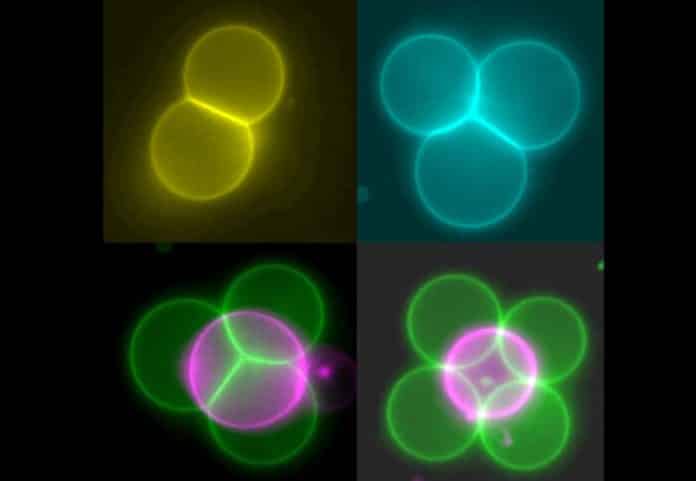Using Miniature “Tractor Beams” to Rearrange Artificial Cells into Tissues
Assembling higher-order vesicle assemblies has discipline-spanning capacity from receptive soft-matter substances to artificial cell networks in synthetic biology. This capacity is finally derived from the ability to compartmentalise and order chemical species in distance. To unlock these programs, spatial arrangement of vesicles with respect to one another has to be controlled, and methods to provide cargo to compartments developed.
Now, researchers at the Imperial College London and Loughborough University have, constructed unique tissue-like structures using artificial cells and a miniature tractor beam. The collaborative team believes that by altering these artificial cell membranes, they can now influence cells to stick together like ‘stickle bricks’ – allowing them to be arranged into whole new structures.
“Artificial cell membranes usually bounce off each other like rubber balls. By altering the biophysics of the membranes in our cells, we got them instead to stick to each other like stickle bricks,” said Imperial College lead researcher Dr Yuval Elani.
“With this, we were able to form networks of cells connected by ‘biojunctions’. By reinserting biological components such as proteins in the membrane, we could get the cells to communicate and exchange material with one another. This mimics what is seen in nature, so it’s a great step forward in creating biological-like artificial cell tissues
.”The group engineered cell structures of varying sophistication, such as lines, 2D squares and 3D pyramids. Mixing the cells with a tendril of membrane substance allowed the construction to be transported collectively with the help of a laser beam or mini tractor ray- and rearranged.
The team was also able to unite two cells into a bigger cell by coating the membrane with gold nanoparticles and focusing the laser beam onto the junction between both cells. This results in the nanoparticles to resonate and divide the encompassing cell membrane.
The membrane then functions as a complete and in the procedure combines any substances which the cells had been carrying, which might be crucial to delivering materials like drugs to cells.
ICL department of chemistry professor Oscar Ces said: “Connecting artificial cells together is a valuable technology in the wider toolkit we are assembling for creating these biological systems using bottom-up approaches.
“We can now start to scale up basic cell technologies into larger tissue-scale networks, with precise control over the kind of architecture we create.”






























